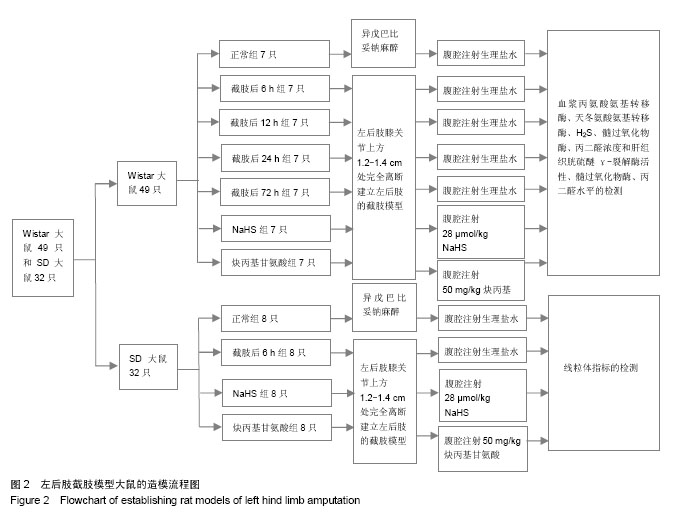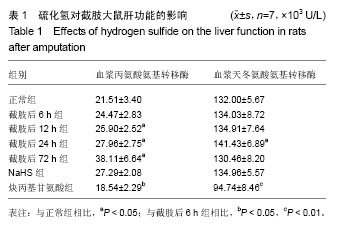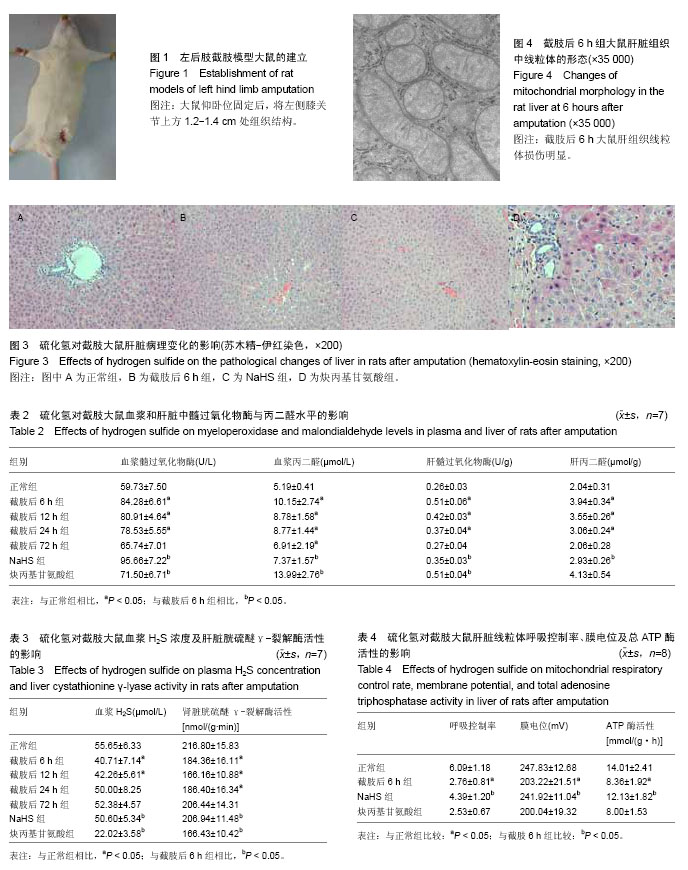| [1] Papanicolaou DA, Wilder RL, Manolagas SC, et al. The pathophysiologic roles of interleukin-6 in human disease. Ann Intern Med. 1998;128(2):127-137.
[2] 杨峰,陈斌,周泽强,等.创伤后早期出现肝功能损伤的临床分析[J].腹部外科,2005,18(5):294-295.
[3] 刘大为.严重创伤后肝功能的改变和防治[J].中国实用外科杂志, 2005,25(12):710-713.
[4] 张伟,樊海宁,秦伟,等.气体信号分子硫化氢在大鼠肝缺血—再灌注损伤中的作用[J].青海医学院学报,2007,28(2):83-87.
[5] Bliksøen M, Kaljusto ML, Vaage J, et al. Effects of hydrogen sulphide on ischaemia-reperfusion injury and ischaemic preconditioning in the isolated, perfused rat heart. Eur J Cardiothorac Surg. 2008;34(2):344-349.
[6] 梁华平,王正国,耿波,等.截肢伤小鼠巨噬细胞对T细胞的直接接触抑制作用[J].解放军医学杂志,1996,21(6):409-411.
[7] 耿彬,杜军保,唐朝枢.敏感硫电极法在测定心血管组织细胞及血浆胱硫醚-γ-裂解酶/硫化氢的应用[J].北京大学学报(医学版), 2005,37(5):545-548.
[8] Zhao W, Zhang J, Lu Y, et al. The vasorelaxant effect of H(2)S as a novel endogenous gaseous K(ATP) channel opener. EMBO J. 2001;20(21):6008-6016.
[9] 柳君泽,高文祥,蔡明春,等.ATP浓度和缺氧暴露对大鼠脑线粒体RNA和蛋白质体外合成的影响[J].生理学报,2002,54(6):485- 489.
[10] Whiteman M, Le Trionnaire S, Chopra M, et al. Emerging role of hydrogen sulfide in health and disease: critical appraisal of biomarkers and pharmacological tools. Clin Sci (Lond). 2011; 121(11):459-488.
[11] Teague B, Asiedu S, Moore PK. The smooth muscle relaxant effect of hydrogen sulphide in vitro: evidence for a physiological role to control intestinal contractility. Br J Pharmacol. 2002;137(2):139-145.
[12] 陈晓波,杜军保,耿彬,等.硫化氢对培养的大鼠主动脉平滑肌细胞增殖的抑制作用[J].中国病理生理杂志,2003,19(8):1009-1011.
[13] Collin M, Anuar FB, Murch O, et al. Inhibition of endogenous hydrogen sulfide formation reduces the organ injury caused by endotoxemia. Br J Pharmacol. 2005;146(4):498-505.
[14] King AL, Lefer DJ. Cytoprotective actions of hydrogen sulfide in ischaemia-reperfusion injury. Exp Physiol. 2011;96(9): 840-846.
[15] Villanueva DS, Poirier P, Standley PR, et al. Prevention of ischemic heart failure by exercise in spontaneously diabetic BB Wor rats subjected to insulin withdrawal. Metabolism. 2003;52(6):791-797.
[16] Faller S, Ryter SW, Choi AM, Inhaled hydrogen sulfide protects against ventilator-induced lung injury. Anesthesiology. 2010;113(1):104-115.
[17] 岳雅伦,宋丽秀,郑娜娜,等.外源性硫化氢在PI3K/Akt通路对大鼠纤维化肝细胞增殖、凋亡的影响[J].世界华人消化杂志,2014, 22(36):5602-5608. |


